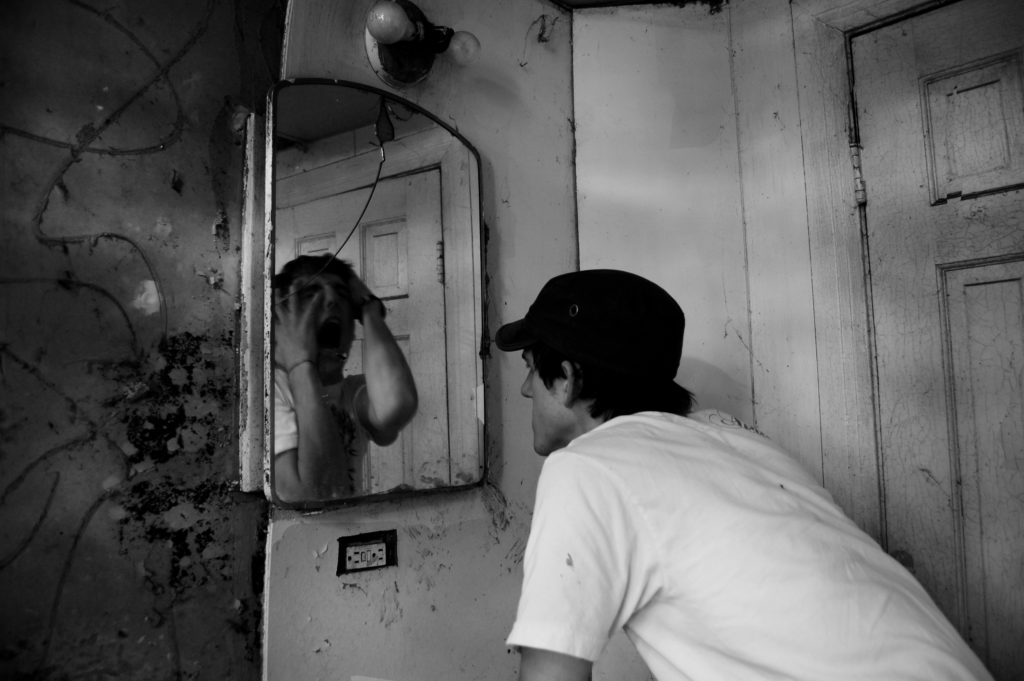Book Excerpt – Ch3, The Man in the Mirror
A short piece from Chapter 3 from the upcoming And There Was Light; How MDMA Saved My Life
—
“The job of parents is to model. Modeling includes how to be a man or woman; how to relate intimately to another person; how to acknowledge and express emotions; how to fight fairly; how to have physical, emotional and intellectual boundaries; how to communicate; how to cope and survive life’s unending problems; how to be self-disciplined; and how to love oneself and another.” -John Bradshaw, Healing the Shame that Binds You
“Train up a child in the way he should go: and when he is old, he will not depart from it.” -Proverbs 22:6, KJV
 After ensuring that a child’s basic needs of shelter, food, and safety are met, one of the most important roles for a parent is to be a model. When we are very small parents model simple behaviours such as how to drink from a glass or clap our hands. Children then mimic them, thus teaching ourselves these skills. When we are older, we learn more complex and abstract concepts our parents model for us: how to deal with and express anger, how to manage money, how to treat and consider other people, and so forth.
After ensuring that a child’s basic needs of shelter, food, and safety are met, one of the most important roles for a parent is to be a model. When we are very small parents model simple behaviours such as how to drink from a glass or clap our hands. Children then mimic them, thus teaching ourselves these skills. When we are older, we learn more complex and abstract concepts our parents model for us: how to deal with and express anger, how to manage money, how to treat and consider other people, and so forth.
Social Learning Theory, first proposed by Albert Bandura, states that most human behaviour is learned through modelling, observation, and performing the act itself1. Bandura also proposed a hierarchy of models in which modelled behaviour of a parent or caregiver, especially those of the same gender, would have far more impact on a child than would a random bystander. While this may feel very ‘common sense,’ it has also withstood the rigours of science and there is a scientific consensus that this type of learning is a large part of childhood development2.
What this means is that through much of our childhood the same-sex parent is the most powerful and influential model that we will learn from.
There is an entire system in our brain composed of what are known as ‘mirror neurons’ that gives us the ability to learn through modelling3. This system is so powerful that Functional Magnetic Resonance Imaging (fMRI) scans show that subjects observing an action have nearly the same pattern of brain activity as when they perform the activity for themselves4. This indicates that seeing the activity performed is neurologically almost indistinguishable from the act itself.
Not to imply that ‘monkey see, monkey do’ is the sole basis for developmental learning but it should be clear to any person who has observed children for any length of time that young people mimic and model much of what they see. They ‘try on’ behaviours and attitudes as a way to understand more about the world. This is the essence of playing ‘make believe’: we try on what we imagine it’s like to be a member of the fire brigade, a police constable, or fighter pilot. We learn how to walk and talk, and later in life how to be a friend or a romantic partner, to a large extent by observing how others do it.
The mirror system is not limited to observing and learning physical actions. Its range encompasses the entire spectrum of human emotions and expression. A father that yells will likely raise children who yell just as a quiet, patient father will likely have relatively quiet and patient children. A mother who does not pay attention to her children will teach them they are not worth her time. Young children see everything their parents do as modelling.
This neurological mirroring system, at its most powerful and fundamental level, shapes the person a child is to become in both the internal and external senses. With Bob as my model I had no real chance at a normal life. What he showed me about myself and the kind of person he wanted me to be was nothing short of abhorrent.
Bob modelled arrogance, anger, despite, disgust, impatience, hatred, and the complete repertoire of negative character traits. I never once saw anything from him that might be interpreted as love. I can count the times he said I did something to his satisfaction on two fingers, one of which was buying marijuana in high school which he then took possession of to smoke himself. He poisoned me against my mother and family and seemingly everything good and beautiful in the world.
He was a monster, and being a monster is what he modelled to me. I would grow into an angry, vengeful, and hateful young man whose true self cowered in pain and horror beneath layers of trauma and appalling modelled behaviour.
References
1- Ryckman, R.M. (2013). Theories of Personality. Belmont, CA: Wadsworth.
2- Grusec, J. (1992). Social learning theory and developmental psychology: The legacies of Robert Sears and Albert Bandura. Developmental Psychology, 25(5), pp776-786.
3- Rozzi, S. (2015). The Neuroanatomy of the Mirror Neuron System. In Ferrari, P. & Rizzolatti, G. (Eds.), New Frontiers in Mirror Neurons Research. Oxford Scholarship Online.
4- Parr, L. (2015). The Chimpanzee Mirror System and the Evolution of Frontoparietal Circuits for Action Observation and Social Learning. In Ferrari, P. & Rizzolatti, G. (Eds.), New Frontiers in Mirror Neurons Research. Oxford Scholarship Online.
